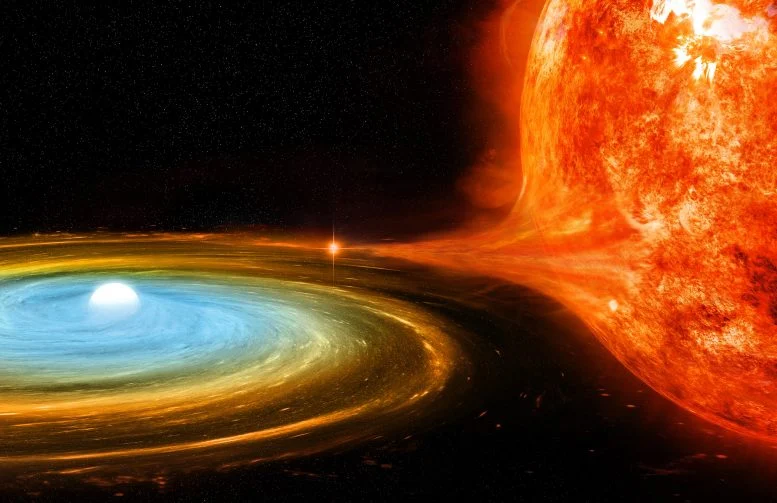
By U.S. Department of Energy October 5, 2024
Recent studies in nuclear astrophysics have introduced the “intermediate i-process,” a critical reaction pathway for the synthesis of heavy elements like lanthanum in stars.
Through experiments at leading facilities such as the Argonne National Laboratory, scientists are refining our understanding of this process, suggesting white dwarf stars as probable sites for these nuclear reactions.
Nuclear Astrophysics and the i-Process
The synthesis of heavy elements in stars remains a central puzzle in nuclear astrophysics. Scientists have recently proposed a novel stellar mechanism, the intermediate “i” process, to account for fresh astronomical findings. Accurate nuclear data is essential to pinpoint the stellar location of the i-process. Recent measurements of a nuclear reaction crucial to the production of lanthanum confirm that the i-process could plausibly explain these astronomical observations, validating the proposed conditions of this process.
Exploring the Impact of New Measurements
The new measurement helps to set constraints for the conditions of the i-process. Scientists currently have limited knowledge of how much heavy element synthesis is the result of this process. The recent result, together with future measurements, can help create a more accurate picture of nucleosynthesis. Studies like this will help scientists finally answer the question of how the elements form in stars.

Advances in i-Process Research
The so-called “intermediate process” or “i-process” is a new nucleosynthesis process that scientists have introduced to explain recent astronomical observations. Now, scientists at the Facility for Rare Isotope Beams (FRIB), a Department of Energy (DOE) Office of Science user facility, have presented the measurement of a nuclear reaction that helps to constrain the astrophysical conditions for the i-process.
The experiment was conducted at the Argonne Tandem Linac Accelerator System (ATLAS), a DOE particle accelerator user facility at Argonne National Laboratory. The experiment used beams produced by the CARIBU facility of ATLAS, and the main device used was the FRIB SuN detector developed at Michigan State University.
Addressing Uncertainties in Element Formation
The research found that observations of the element lanthanum, when combined with observations of other elements like barium and europium, are sensitive to the i-process conditions. However, the large nuclear physics uncertainties do not allow researchers to describe the exact conditions and identify the site of the i-process.
To help address the uncertainties, particularly for the production of lanthanum, the researchers studied the ability of the barium-139 nucleus to capture neutrons in the stellar environment. With the new constraints, scientists can confirm the neutron density required for an i-process. They can also confirm that rapidly accreting white dwarf stars are a viable site for the i-process.
Reference: “First Study of the 139Ba(n,γ)140Ba Reaction to Constrain the Conditions for the Astrophysical i Process” by Spyrou, Artemisia; Mucher, Dennis; Denissenkov, Pavel A.; Herwig, Falk; Good, Erin C.; Balk, Gabriel; Berg, Hannah C.; Bleuel, D L.; Clark, Jason A.; Dembski, Cade; Deyoung, Paul; Greaves, Beau; Guttormsen, M.; Harris, Caley; Larsen, A. C.; Liddick, Sean N.; Lyons, Stephanie M.; Markova, Maria; Mogannam, Mejdi J.; Nikas, Stylianos; Owens-Fryar, Gerard Jordan; Palmisano-Kyle, Alicia; Perdikakis, George; Pogliano, Francesco; Quintieri, Michael; Richard, Andrea L.; Santiago-Gonzalez, Daniel; Savard, Guy; Smith, Mallory K.; Sweet, Adriana; Tsantiri, Artemis and Wiedeking, M, 17 May 2024, Physical Review Letters.
DOI: 10.1103/PhysRevLett.132.202701

Leave a Reply